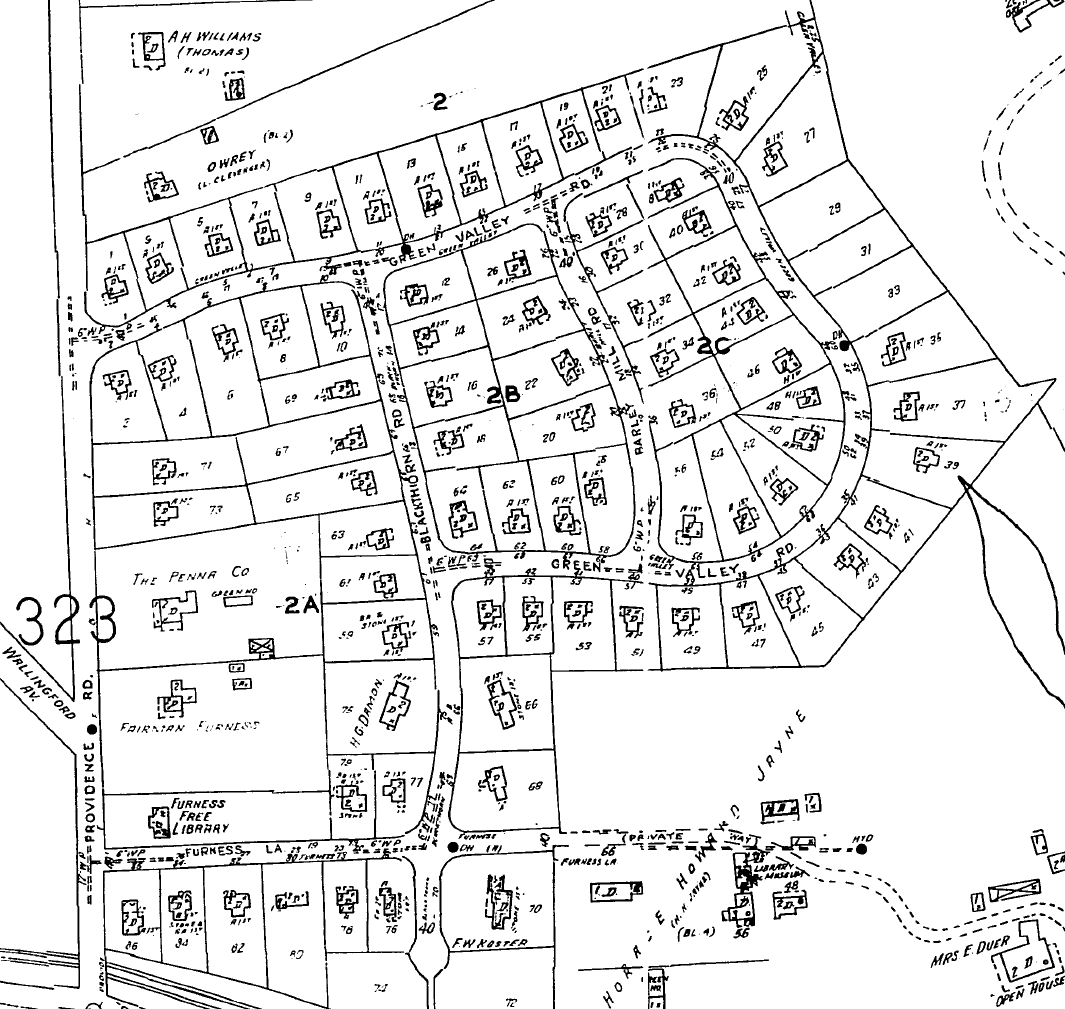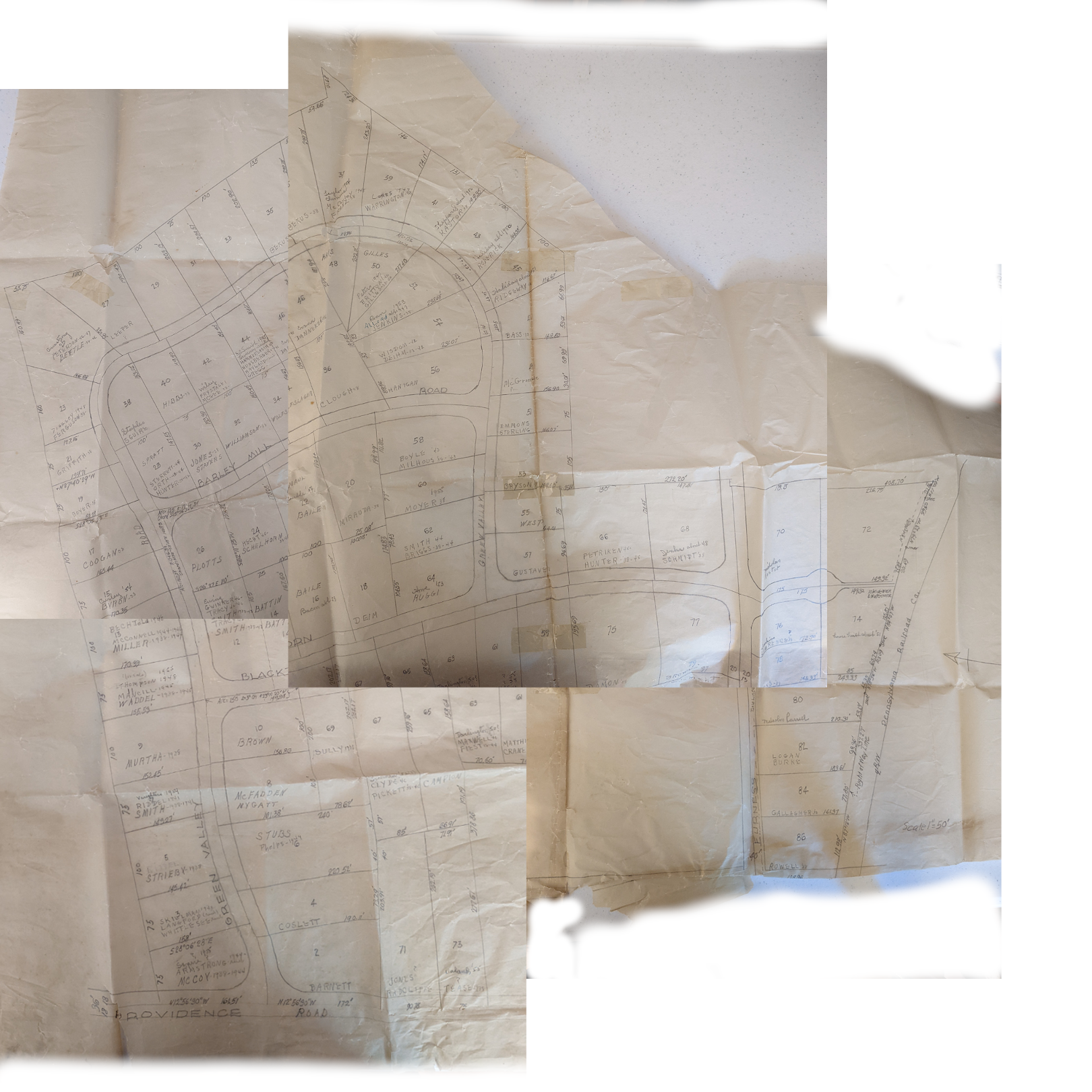Heatherwold and the 1950 US Census

First page for the Heatherwold subdivision in the 1950 US Census (Enumeration District PA 23-179, page 1)
In April 2022, the records of the 1950 US Census were released to the public. Historic census data offers a wealth of information about the people alive at that time—their names, where they lived, their ages, their occupations. Over the past month, I spent some time looking at the pages of 1950 census data for the Heatherwold neighborhood, and I put together a directory of Heatherwold for 1950 on Google Docs. After completing the spreadsheet, I did some analysis of the occupations of the people living in our neighborhood and where they were born. I also spent quite a bit of time figuring out the historical property parcel numbers that were in use in 1950, before the current house numbers were assigned.
Occupations
I hadn’t expected the chief employer of people in the neighborhood to be an oil refinery. Fourteen people worked at a refinery in a variety of roles, ranging from office clerk to engineer. Presumably this was the Sun Oil Company (Sunoco) refinery in Marcus Hook, associated with Joseph N. Pew Jr.. (The census lists employers generically, so it’s impossible to know exactly where these people worked.) I’ve tabulated below the occupations listed in the census for the eighty-six people who worked outside the home. I’ve organized the jobs into broad categories and arranged them in descending order by the number of people in each category. As might be expected during this era, jobs appear most consistently for the head of the household, who is almost always male. Seventy-two men and fourteen women have occupations listed, and the women include both mothers and daughters.
There are a few interesting jobs on the list: salesman for a chewing-gum company, captain of an oil cargo ship (later lost at sea, switchman for the telephone company, secretary for an undertaker, and “comparison shopper.”
- Oil refinery
- engineer, oil refinery
- mechanical engineer, gas turbines
- accountant, oil refinery
- draftsman, oil refinery
- captain, oil cargo ship
- staturary (?) engineer, oil refinery
- asst foreman, oil refinery
- clerk, oil refinery
- clerk, oil refinery
- inspector, oil refinery
- chemist, oil refinery
- chief operator, oil refinery
- instrument engineer, oil refinery
- store house officer, oil refinery
- Education
- college engineering teacher
- elementary teacher
- psychology teacher, college
- elementary teacher, private school
- teaching and consulting in engineering, private college
- elementary teacher, township school
- music teacher, own business
- educational dir., YMCA
- secretary, township school
- Sales
- salesman, chewing gum company
- salesman, furnaces
- beer distributor, malt sales
- sales rep
- distributor, office equipment
- dept mgr, electric equipment
- manufacturer rep.
- Insurance
- salesman, insurance
- broker, insurance sales
- lawyer, insurance co.
- insurance agent
- manager, life insurance
- Banking
- banker
- investment banker, brokerage firm
- manager, banking house
- VP, bank
- Textiles
- research chemist, rayon producer
- chemist, natural dye tannins
- stenographer, rayon producers
- photographer, rayon production
- Engineering, Civil
- civil engineer
- engineer, government
- construction engineer, state govt.
- structural engineer, residential construction
- Chemicals
- industrial relations, chemicals
- chemist
- chemist, waterworks
- Railroad
- chief clerk, railroad
- clerk, railroad
- accountant, railroad
- Secretarial
- secretary, law firm
- secretary, undertaker
- secretary, doctor
- Law
- attorney
- attorney, own practice
- Advertising
- office manager, advertising
- copywriter, advertising
- Utilities
- electrical engineer, utility company
- chief clerk, electric utility company
- Publishing and printing
- publisher, publishing house
- VP, tag(?) printing
- Paper
- broker, wholesale paper
- chemist, paper mill
- Real estate
- real estate partner
- realtor
- Healthcare
- asst admin., hospital
- nurse, hospital
- Repair and maintenance
- partner, electric motor repairs
- maintenance man, tube maker
- Accounting
- accountant
- coal mining accountant
- Building inspection
- building inspector
- Meat packing
- manager, meat packers
- Agriculture
- farmer, own farm
- Driving
- driver, laundry truck
- Trucking
- manager, trucking co.
- Art
- artist, free lance
- Shopping
- comparison shopper, retail store
- Telephone
- switchman, telephone co.
- Housekeeping
- housekeeper, private house
- Psychiatry
- psychiatrist, family society guidance clinic
- Floor installation
- foreman, floor coverings
- Engineering, electrical
- electrical engineer
House numbers
At first, I thought this would be a simple transcription project, but I quickly saw that many of the house numbers in the census made no sense. 18 Blackthorn Road? What could that be? It turns out the houses were identified using the sequential property parcel numbers that were assigned when the subdivision was built in 1937–39. These parcel numbers often bear no resemblance to the current house number. For example, the house across the street from 27 Green Valley Road was numbered 40 instead of 28. The house across the street from 18 Blackthorn Road (now 110 Blackthorn) was numbered 65.
At some point, the numbers were changed to make more sense. Even during the decade between the 1940 and 1950 censuses, numbers for a few houses had already changed. A good example is 103 Blackthorn Road, which was numbered 75 in the 1940 census (putting it in sequence with houses on Furness Lane) and 57 in the 1950 census (putting it in sequence with the houses on Blackthorn).
My first chore was to find a map with these original property parcel numbers. I’d already done a bit of research with the Sanborn Fire Insurance maps for the neighborhood, and the Sanborn map from 1951 included the parcel numbers. Still, some of these numbers didn’t match up with what I found in the census records.

1951 Sanborn Fire Insurance map for Heatherwold
Early in July, I sent the link to my draft spreadsheet out to the email list for our neighborhood, and one of my neighbors wrote back to say he had a map of the neighborhood that had been drawn and maintained by Arthur E. Plotts (109 Barley Mill Rd.), one of the original residents of the neighborhood. The neighbor loaned me the map, and I saw that Plotts had prepared a professional-quality survey map of the neighborhood and kept a record of the occupant of each house from the signing of contracts in 1938 until about 1955. (See below. The full-sized image may be downloaded here). By using this map, I was able to sort out some of the conflicts in parcel numbers between the Sanborn map and the census report. I also created a second tab on the spreadsheet to transcribe the names of the residents at each property, as recorded by Plotts.

Map of Heatherwold drawn by Arthur E. Plotts. The original is about 3' x 3', so I took four photographs of quadrants and crudely stitched them together to create this image.
In the spreadsheet, I’ve recorded the parcel number as found in the census report in the first column and the current house number in the second column. In the first column, I’ve noted—and attempted to resolve—any discrepancies between the parcel numbers in the census and the map.
Place of birth
There were 260 people living in Heatherwold in 1950. The census includes information on place of birth, and as expected, most people were born in Pennsylvania, followed at some distance by New Jersey and New York. Eleven people were born outside the United States. These figures include adults and children.
- United States
- Pennsylvania: 192
- New Jersey: 12
- New York: 12
- California: 5
- Iowa: 5
- Delaware: 3
- Massachusetts: 3
- Ohio: 3
- Florida: 2
- Maryland: 2
- Utah: 2
- Wisconsin: 2
- Illinois: 1
- Indiana: 1
- Michigan: 1
- Virginia: 1
- West Virginia: 1
- Russia: 3
- Italy: 2
- Switzerland: 2
- Canada: 1
- Germany: 1
- Lithuania: 1
- Philippine Islands: 1
More history from an early resident
After I sent the email to our neighborhood list, Bill Henderson, a current resident on Blackthorn Road, replied with more history, passed along to him by an original resident.
I’d like to add a couple of things, so they are not lost to history.
In the 1939 aerial photo, also visible at the very far left is the private airplane landing strip which was also used very briefly to deliver the mail from Media to the Philadelphia post office, according to what I have read. [For more about airmail delivery from Wallingford, see this post.—RG]
I’d also like to share this story, delivered reliably only secondhand after talking with Emily Damon, the daughter of H. Gilroy Damon who is listed on this document as an 11 year old at 103 Blackthorn Rd., the current house owned by the Hollyer family. Emily told me that when this neighborhood was originally designed to be built and the lots were laid out, construction began at the far south side of the neighborhood, near Furness Lane. The first six houses were built are all much larger than the smaller houses that populate the rest of the neighborhood. This was at the beginning of the depression. After construction of the first homes began, the builder of the neighborhood faced bankruptcy because of the depression, and halted construction. Emily told me that he then gave each of the six houses, one each, to the tradesman who were building their neighborhood for him. One went to the carpenter, one went to the plumber, another to the electrician, etc. Emily‘s father, H. Gilroy Damon was the surveyor who did all of the layout of the lots in the neighborhood. If you’ve seen any concrete stampings in the old sidewalks in media and other surrounding towns, you’ve likely seen his name stamped in stone. He was a well known surveyor in Delaware County, and the company still is in daily operation!
https://damonengineers.com/
At that point, Mr. Damon redrew all the remaining lots to fit smaller Depression-era homes on them. This allowed the builder to continue the project building and selling homes that cost a lot less money and to regain his solvency. That is why the homes at one end of our neighborhood are so much larger than the rest.
I believe that Mrs. Damon, his widow, was the last original resident of the neighborhood to live here, as I recall she died in the late 1990s. People who have been in this neighborhood for a long time (we’ve been here since about 1996) probably recall that the Damon house had hedges set back about 15 feet from the street, and a small white gate with what looked like a cannonball hanging from it on a chain, that helped the gate close by itself when it was opened. It always seemed strange to me that the hedges and the gate were set back so far from the street, and I asked her why this was.
She laughed when she told me that her father had laid out the neighborhood with the intention that it have sidewalks and street lamps. She told me that until the day he died, he was convinced that they were going to come back and put in place the sidewalks that he had specified In his layout of the neighborhood. It wasn’t until the Hollyers moved in that the hedges were removed along with the gate, erasing Mr. Damon’s vision.
Emily also related the story that she liked to play football with her brothers and their friends in the back yard, and her father did not think this was appropriate for a young lady, and so he planted several trees in the middle of the yard to discourage this activity. Those trees were there I think until just a year or two ago when they were removed after fulfilling their lifecycle.